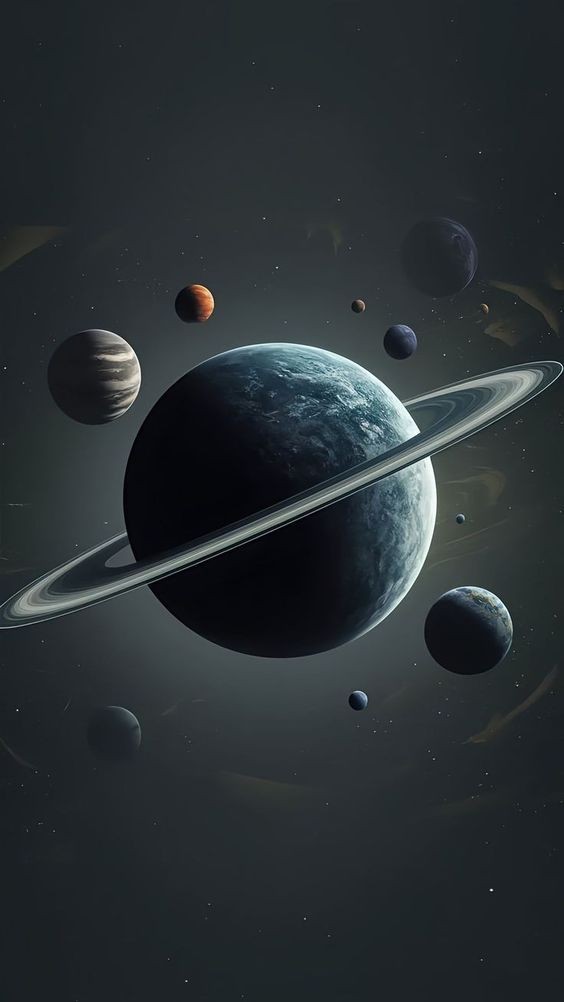The Majestic World of Jupiter: Exploring the Largest Planet in Our Solar System
Jupiter, the colossal giant of our solar system, commands awe and admiration. As the largest planet in our celestial neighborhood, Jupiter offers a dramatic display of grandeur, from its swirling clouds to its intriguing moons. This article delves into the remarkable features and mysteries of Jupiter, providing a glimpse into why this gas giant is a subject of fascination for scientists and skywatchers alike.
A Giant Among Giants
Jupiter’s sheer size sets it apart from all other planets. It has a diameter of about 86,881 miles (139,822 kilometers), making it more than 11 times wider than Earth. Its mass is 318 times that of our home planet, and its volume could contain more than 1,300 Earths. This immense size makes Jupiter not only a central figure in our solar system but also a key player in understanding planetary science.
A Stormy Atmosphere
One of Jupiter’s most iconic features is the Great Red Spot, a massive storm that has been raging for at least 400 years. This storm, larger than Earth, showcases the dynamic and turbulent nature of Jupiter’s atmosphere. The planet's atmosphere is composed mainly of hydrogen and helium, with trace amounts of methane, ammonia, and other gases. These elements create vivid cloud bands that swirl around the planet, driven by its rapid rotation and complex weather patterns.
The Rings of Jupiter
While Saturn is famous for its spectacular rings, Jupiter also has a ring system, though much fainter and less conspicuous. Composed mainly of dust particles, Jupiter’s rings are difficult to observe from Earth but were discovered by the Voyager spacecraft in 1979. They are divided into three main parts: the Halo Ring, the Main Ring, and the Amalthea Gossamer Ring. These rings add a subtle yet intriguing feature to Jupiter’s overall appearance.
Moons of Wonder
Jupiter is orbited by at least 92 moons, with four of the most notable being the Galilean moons: Io, Europa, Ganymede, and Callisto. Discovered by Galileo Galilei in 1610, these moons offer a wealth of scientific interest:
Io: Known for its extreme volcanic activity, Io is one of the most geologically active bodies in the solar system. Its surface is dotted with hundreds of volcanoes and lava flows.
Europa: This moon is of particular interest due to its smooth ice-covered surface, which scientists believe conceals a subsurface ocean. Europa’s ocean may harbor conditions suitable for life.
Ganymede: The largest moon in the solar system, Ganymede is even larger than Mercury. It has a magnetic field and is believed to have a layered interior with a liquid iron or iron-sulfide core.
Callisto: This moon is heavily cratered and ancient, preserving a record of early solar system impacts. Its surface is one of the oldest in the solar system.
Exploring Jupiter
Jupiter has been studied extensively by spacecraft, including the Pioneer and Voyager missions, Galileo, and more recently, the Juno spacecraft. Juno has been providing detailed observations of Jupiter’s atmosphere, magnetic field, and gravitational field since it entered orbit in 2016. These missions have significantly expanded our understanding of the planet’s complex systems and continue to reveal new insights.
Why Jupiter Matters
Studying Jupiter is crucial for several reasons. As a gas giant, it provides clues about the formation and evolution of the solar system. Its massive gravitational field influences the orbits of other objects and helps to shield the inner planets from potential comet and asteroid impacts. Additionally, understanding Jupiter’s atmospheric dynamics and magnetic field offers parallels for studying exoplanets in distant star systems.
Conclusion
Jupiter, with its stunning visual appeal and scientific significance, remains a focal point of planetary research and exploration. Its immense size, dynamic atmosphere, intriguing moons, and subtle rings make it a planet of unparalleled interest. As our exploration of the cosmos continues, Jupiter will undoubtedly remain a source of wonder and discovery, enriching our understanding of the solar system and beyond.






